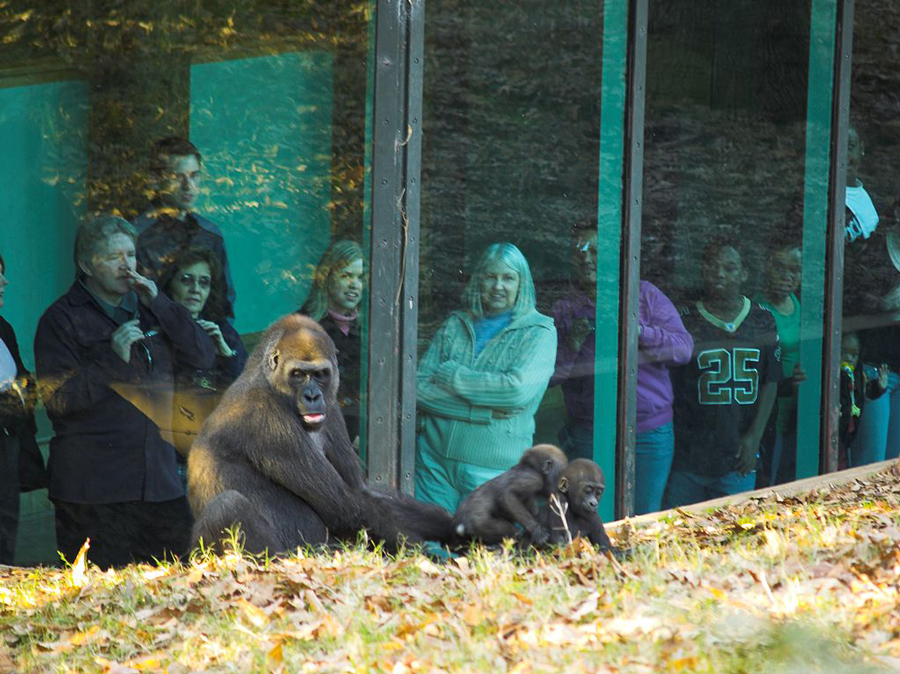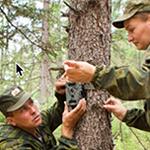
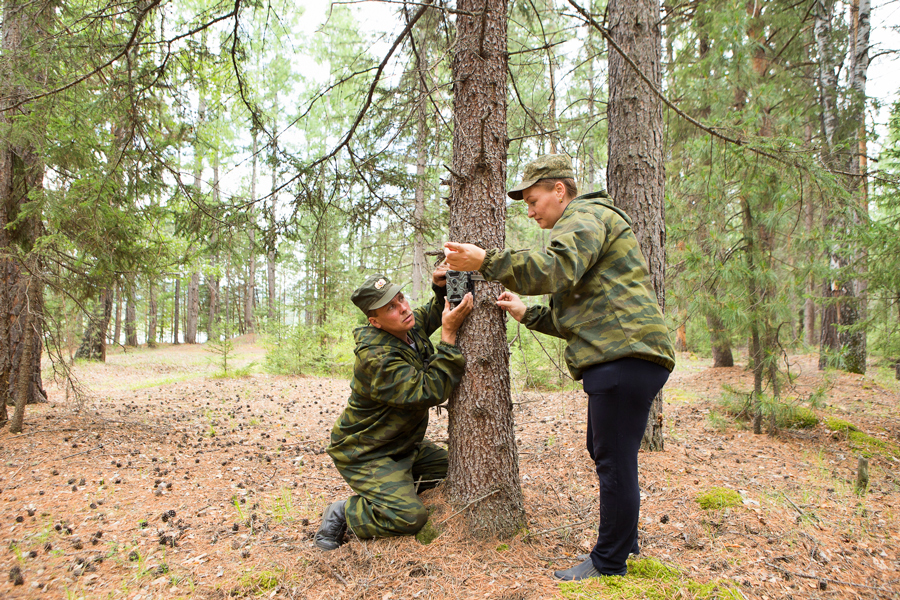
Have you ever considered the unexpected heroes in our fight to preserve the planet's wildlife? With the ecological clock ticking louder each day, our determination to grasp and conserve the intricate tapestry of our natural world becomes more pressing. Most of us associate security cameras with urban settings – the silent observers on building corners or mall ceilings, watching over human hustle and bustle.
Yet, a shift is underway. Beyond the urban jungle, surveillance cameras have ventured into real jungles, savannahs, and forests. You'd be surprised to learn these very devices, so often associated with surveillance and security, now stand as vanguards of conservation.
This post will unravel the unexpected journey of security cameras from city streets to conservation frontlines, highlighting their transformative role in wildlife research and protection.

ChrisTheWhaleKing, CC BY-SA 4.0, via Wikimedia Commons
Benefits of Security Cameras in Wildlife Research and Conservation
Monitoring and Counting Wild Animals
When you picture the vastness of the Amazon or the expansive stretches of the African savannah, the immense biodiversity they host comes to mind. In these expansive habitats, manually counting and continuously monitoring wildlife are herculean tasks, often riddled with inaccuracies. Enter the transformative power of utilizing security cameras. Their precision, consistency, and ability to function without interruptions provide an unparalleled advantage.
Across dense, atmospheric rainforests where every step might disturb the fragile balance, security cameras act as silent guardians. They capture the quick flit of a rare bird, the slither of a snake, and the cautious prowl of a jaguar, all while remaining relatively unseen. In vast landscapes like the savannahs, where animals roam freely across miles, cameras chronicle migratory patterns, feeding habits, and social behaviors.
Beyond raw data, the use of security cameras has transformed the very methodologies we employ in wildlife research. Estimating the population of a species, for example, is no longer restricted to glimpses caught during daylight or constrained by the challenges of nocturnal expeditions. These cameras, equipped with night vision and motion sensors, ensure the nocturnal activities of animals, often the most active periods for many species, are captured in detail.
The places where you least expect a technological presence, like the thick undergrowth of tropical jungles or remote mountain paths, are where cameras offer the most benefits. They reveal the migration routes of elusive species, provide insights into their mating rituals and habits, as well as a glimpse in to their parenting behaviors.
Furthermore, the role of cameras isn't limited to the wild. In controlled environments such as zoos and sanctuaries, cameras serve another vital purpose. Zoo cameras give us round-the-clock insights into the health, behavior, and well-being of animals in captivity. Constant observation allows zoo keepers and veterinarians to act swiftly at the first sign of distress or illness, ensuring that captive animals receive efficient and humane care.
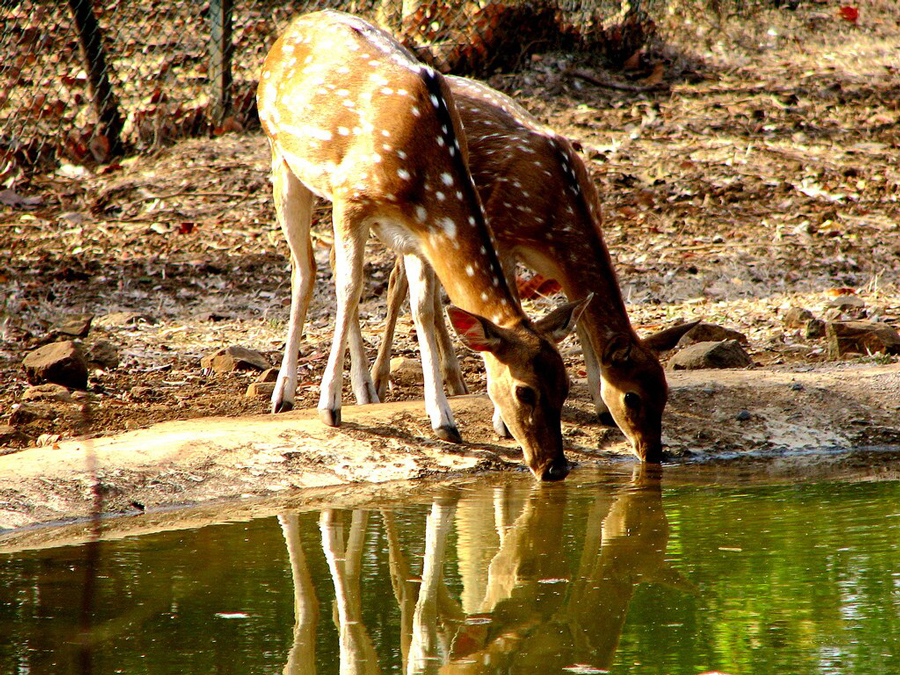
Shivam S, CC BY-SA 4.0, via Wikimedia Commons
Ensuring Animal Welfare and Safety
Have you ever had to keep an eye on a playful toddler at a busy park? It's a mix of anxiety, alertness, and non-stop vigilance. Now, amplify that feeling and imagine you’re tasked with overseeing the well-being of a swift deer in a vast wildlife preserve or a restless lion in a city zoo. Quite a task, isn't it? This is where security cameras, a surprisingly underrated tool in conservation, step in as the unsung heroes.
In vast open preserves, challenges are endless: the terrain is unpredictable and the wildlife, even more so. Deer drinking peacefully at a pond could potentially be stalked by a predator. Every bird's nest might be at risk from competition by other birds and predators.
And then there are the human related dangers: poachers, or human-caused wildfires that can start in the blink of an eye. Surveillance cameras, stationed like silent sentinels, offer an invaluable set of eyes in these regions. They're the ever-watchful guardians that don't require rest, capturing everything from a lion's sleepy yawn to a swift alert at the faintest rustle in the grass.
Now, let’s bring it closer to home. Within the structured confines of zoos and sanctuaries cameras play an equally pivotal role. It’s not just about keeping animals 'in' but ensuring they're happy, healthy, and engaged.
Enclosures, despite their best designs, can sometimes be challenged by a curious or stressed animal. It's in these rare moments that video surveillance cameras transform into silent whistleblowers, sounding the alarm before a curious monkey discovers an unsecured latch or a panther finds a weak point in its fence.
And it's not just about escapes or physical safety. Anyone who's spent time watching animals knows they're a whirlwind of emotions and behaviors. Just like in our world, there's friendship, rivalry, joy, and sometimes, sadness. Cameras help zookeepers and researchers peel back the layers of these complex animal dynamics. Examples include if an elephant feels isolated or when tensions rise in a pack of wolves.
Health, too, can be a tricky thing. Animals, in their resilience and instinct to hide weakness, might not always show when they're feeling under the weather. The subtlest change, a slower stride or a lost appetite, won’t go unnoticed under the keen gaze of cameras, allowing for timely intervention.
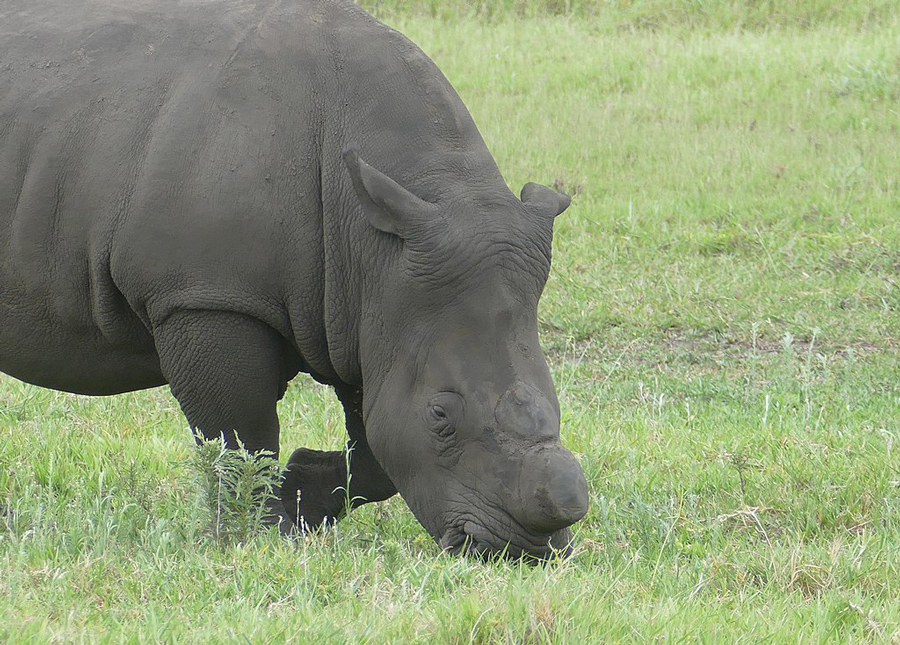
Bernard DUPONT from FRANCE, CC BY-SA 2.0, via Wikimedia Commons
Preventing Poaching and Illegal Activities
Poaching isn't just a cruel act; it's a dagger through the heart of conservationists and nature lovers worldwide. For too long, this dark specter has hung over our efforts to preserve and protect vulnerable species, casting a shadow of despair. But there's a silver lining now, and it's coming from an unexpected ally: security cameras.
Consider, for a moment, the vast, sweeping landscapes of wildlife reserves. Their beauty is undeniable, but their sheer size makes them a vulnerable target. Poachers, often familiar with the terrain and adept at evading patrolling guards, have historically had the advantage.
However, with the integration of video surveillance that advantage has been greatly diminished; every rustle in the bushes, every footprint left behind, every suspicious movement, now comes under the purview of a vigilant electronic eye. It's like having an army of watchful hawks, eyes sharp and ever-ready.
When potential poachers know they're being watched, the risk often outweighs the gain,but it's not just about the deterrence factor, which is crucial. Beyond deterrence, cameras capture hard evidence. If an illicit activity does occur, these devices can provide damning footage to identify the culprits, ensuring they face the full force of the law. Think of a camera as a digital witness, unbiased and precise, testifying against those who harm our planet's treasures.
Let's not forget the insidious underworld of illegal wildlife trade. From black markets dealing in rare animal body parts to the cruel trapping of exotic birds for the illegal pet trade, these activities are an open wound in the face of conservation. Smart security cameras, especially when integrated with advanced technologies and AI analytics, can track and monitor suspicious behaviors, intercept illegal transactions, and over time, potentially unearth entire criminal networks.
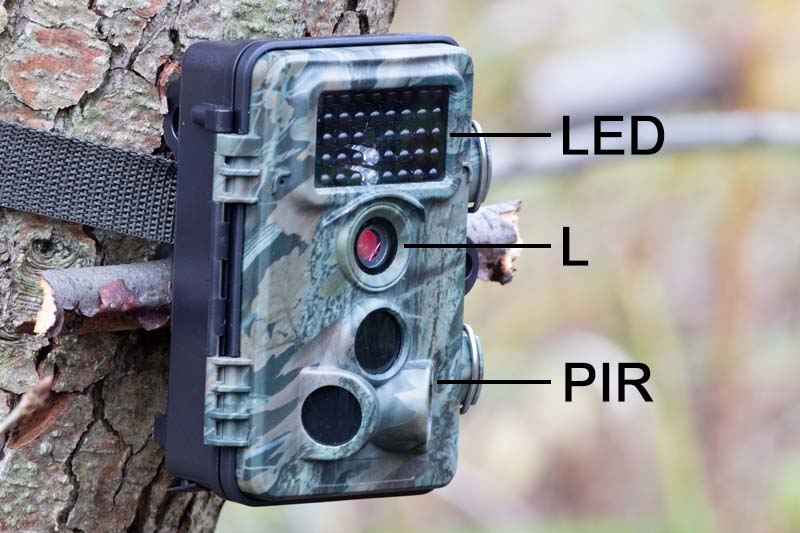
Dariusz Kowalczyk, CC BY-SA 4.0, via Wikimedia Commons
Technological Advancements
It's fascinating how technology often mirrors nature. As a tree branches out, exploring new spaces, so too does the world of tech, stretching into uncharted territories. In the heart of wildlife conservation, security cameras have been at the forefront of this branching evolution, harnessing the latest in technological advancements to become more than just observers.
Integrating artificial intelligence (AI) with IP cameras, a type of surveillance camera, has been nothing short of transformative. Picture this: instead of merely recording the movements of animals, these cameras now possess the discerning eye of an expert biologist. Some proprietary AI models can differentiate the casual gait of a wandering deer from the purposeful stride of a prowling tiger. This is not just about capturing images; it's about interpretation and response.
And while the power of AI in these cameras is remarkable, the story doesn’t end there. Enter drones. These flying marvels, equipped with cameras, offer a perspective that ground-based equipment simply can't. They provide aerial reconnaissance, covering vast terrains from unique angles, ensuring that every nook and cranny is within our purview.
Adding to these useful technological marvels is the integration of environmental sensors, to create a holistic wildlife surveillance system. These sensors, which detect changes in humidity, temperature, and other environmental factors, provide further context to recorded video, allowing researchers to better understand the habitats they monitor.
At the core of this technological symphony is the software. Advanced AI-driven software has moved beyond mere tracking. Newly emerging AI-models have assisted researchers in deep analysis to unravel the mysteries of migration, territorial behaviors, and even complex social dynamics within animal groups.
Case Study: Use of Security Cameras in Zoo Atlanta
When Zoo Atlanta decided to integrate live stream cameras from CCTV Camera World into its conservation blueprint, the stakes were high. Their goal? Enhancing animal welfare, ensuring a seamless watch over diverse species, and bolstering safety for both wildlife and visitors. As they rolled the cameras out, the transformation was striking.
Close monitoring led to improved habitat management, fewer conflicts within enclosures, and a heightened sense of security. Viewers of these continuous webcams are also entertained and more likely to want to visit the zoo, increasing visitor counts. This success story from Zoo Atlanta illustrates the game-changing potential of integrating technology into conservation.
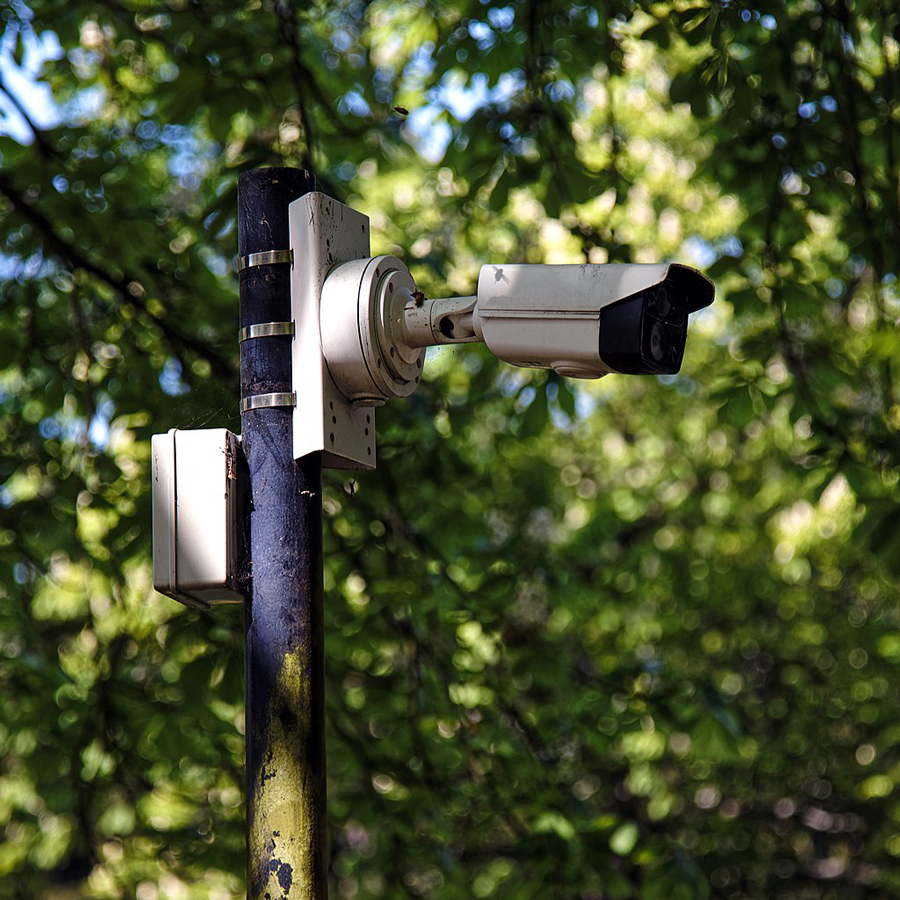
Acabashi, CC BY-SA 4.0, via Wikimedia Commons
Ethical and Social Implications of Using Security Cameras in Wildlife Conservation
In our enthusiasm for tech-driven conservation, it's vital to remember that every coin has two sides. Yes, video surveillance cameras offer a treasure trove of benefits, but they're not without their drawbacks.
Imagine living close to a reserve, waking up to birdsong and, perhaps, the distant roar of a big cat. Now, add to this serene image the omnipresence of cameras, eyes that never blink. Local communities, who've been stewards of these lands for generations, might understandably feel like they're on a never-ending episode of reality TV. Their daily routines, their cultural practices, and their personal moments could potentially be under the lens, causing discomfort and a feeling of being constantly watched.
Tourist spots are another area of contention. Visitors flock to these places for a rendezvous with nature, expecting moments of solitude and reflection. However, the knowledge of being monitored can sour these experiences, turning a serene lakeside moment into a scene from a surveillance state.
Furthermore, like all powerful tools, there's the ever-present specter of misuse. Could these feeds be hacked? Could footage be misused or taken out of context? The potential for breaching privacy and trust is real and cannot be brushed under the carpet.
Thus, while the merger of technology and conservation holds immense promise, it's essential to tread with empathy and caution. Open dialogues with communities, transparent objectives, and robust guidelines will be crucial. The true success of such initiatives lies not just in the data collected, but in the respect and trust earned from those living alongside the wild.
Conclusion
Security cameras, once the eyes of our urban jungles, have ventured into the real ones. The results are remarkably promising. While we once looked up and saw them watching over bustling intersections and busy malls, these same cameras now capture the stealthy prowl of a leopard or the playful antics of monkeys in the wild. Through them, our understanding of nature deepens, poachers second-guess their illicit activities, and wildlife finds an unexpected guardian.
But with every leap of innovation comes a responsibility. It's not just about setting up cameras and collecting data. We have to ask ourselves: Are we being intrusive? Do we ensure the privacy of local communities and the wildlife itself? In our enthusiasm, we must never forget the delicate balance of technology and nature.
So, consider it both a salute to the potential of technology in conservation and a gentle nudge towards responsible use. Dive deep, be curious, but always be respectful; because in this dance between tech and nature, both partners deserve to shine.
Featured Image 171349982 licensed from Deposit Photos

